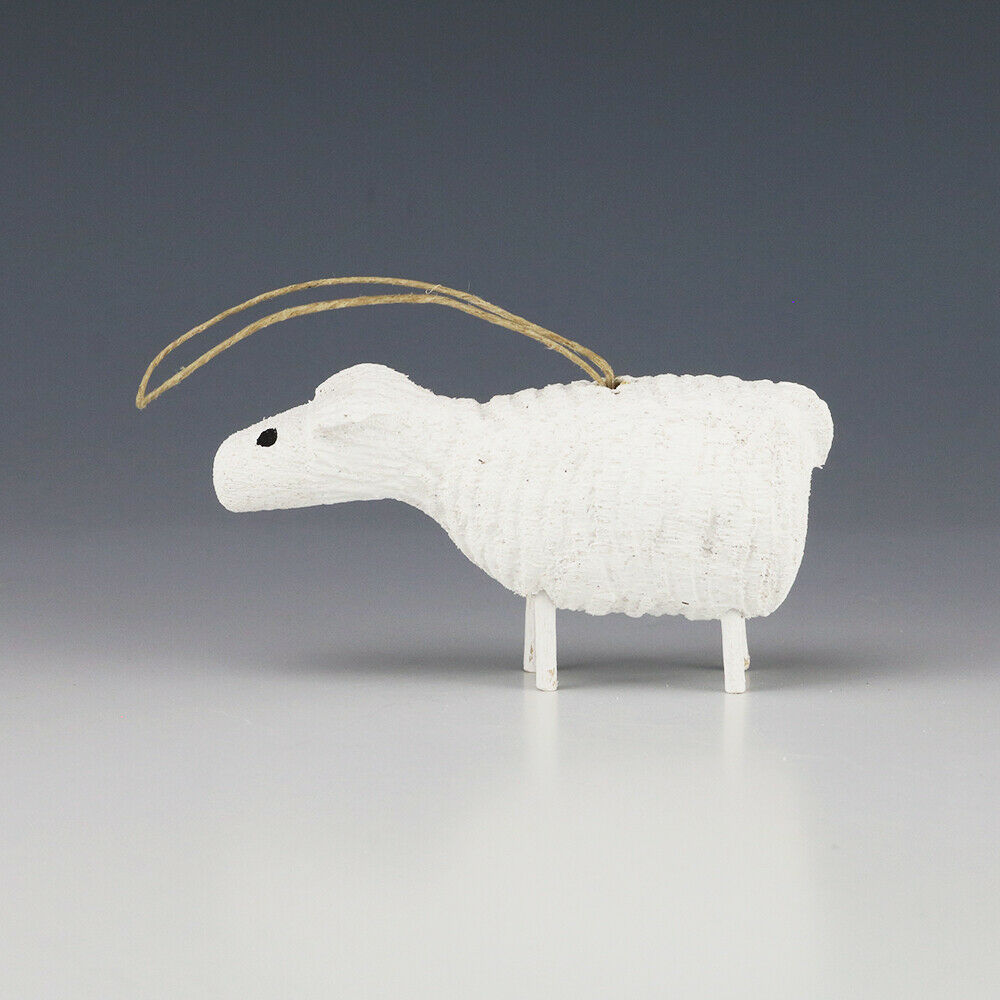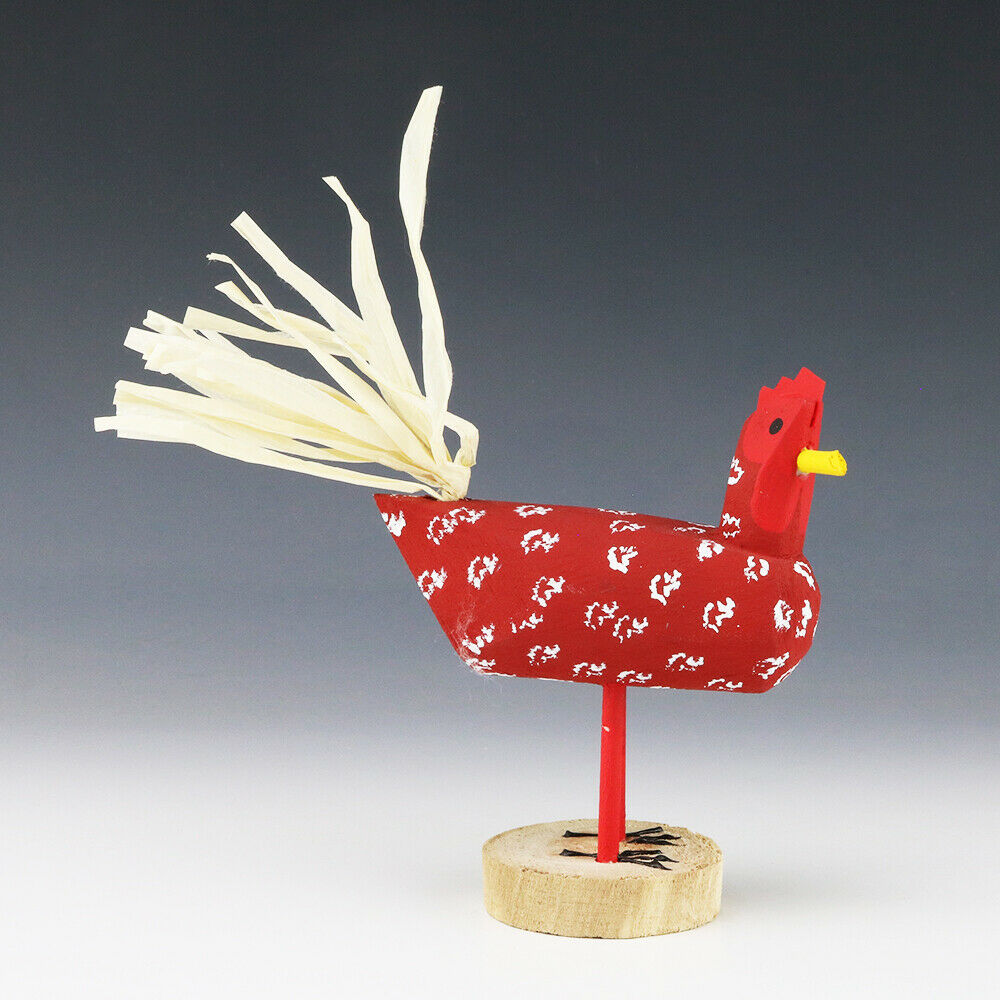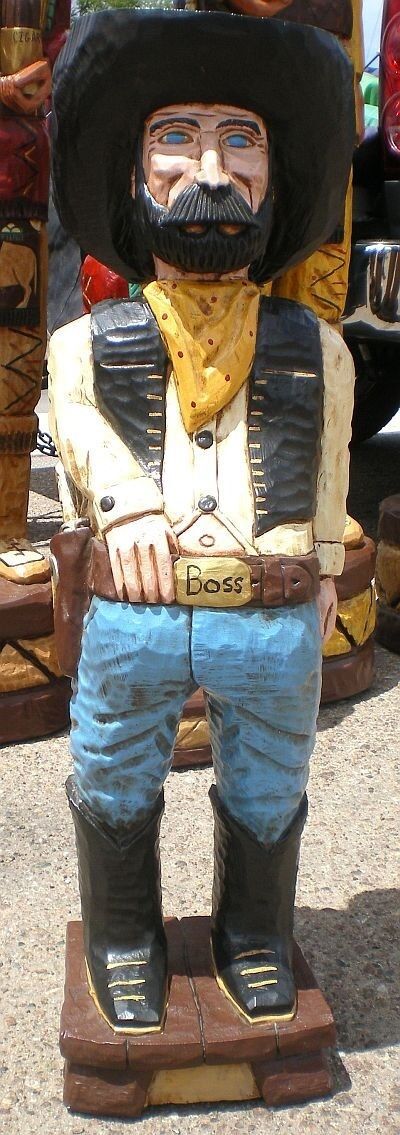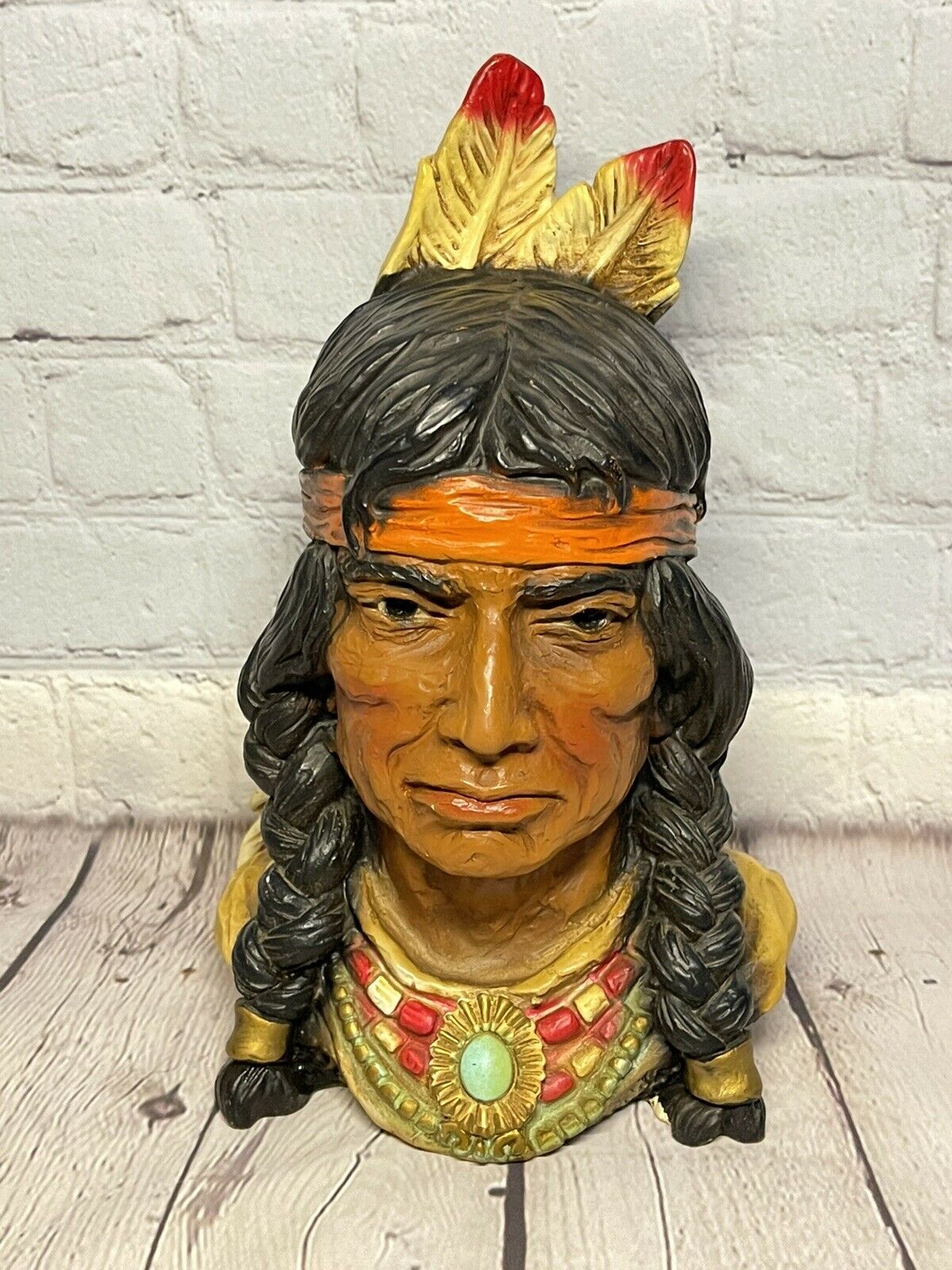-40%
Brave's face Talking Stick; chip carved: Erik Sappier, Penobscot: new technique
$ 83.82
- Description
- Size Guide
Description
The carved braves's headatop this talking stick is regal
- with two feathers in his hair and a shining star symbol beneath his neck. His long hair is loose and his hair and the tops of the feathers have been stained black.
Below the face, t
he barkless portion of the stick
shows the elegance that painting can bring. Erik Sappier, Penobscot /Abenaki explains this technique "
these sticks take 4-5 coats of stain to achieve the color, whereas the talking sticks I've made in the past are chip carved, stained then stain is wiped away. The painting of this stick takes me about the same amount of time as it does to carve it, so all in all, these new painted sticks are 2-4 times more time consuming then a chip carved, then stained stick. Also, it's a tougher medium because I can't really draw what I want to chip carve, it scars the stained wood.
"
Wabanaki
- a confederacy of 5 NE tribes currently residing in what is now Maine, Vermont and Eastern Canada.... The Abenaki, Maliseet, MicMac (Mi'kmaq - Canadian spelling), Passamaquoddy and Penobscot.
This stick is painted a deep dark
glossy
black. Traditionally many chip carved items, talking sticks, walking sticks and root clubs have some of the bark left on some portion of these items. Here the bark is left on the upper portion of the stick, and Erik has cut out a large portion of the upper front of the stick where he has carved the man's head.
Erik Sappier's work is included in a recent Abbe Museum's exhibit....
"
Emergence: Root Clubs of the Penobscot Nation"
This stick is exquisitely detailed. Erik uses traditional designs with several variations on a traditional style chip carved talking stick, most are design elements that have been used by Erik's ancestors for centuries.
This talking stick has at top - the braves's head with his feathers and the carved symbol beneath his neck. Below the bark at the top front traditional designs contrast with the glossy black paint. The bottom 1/2 of the stick is painted and has chip carving with some incised lines ... the carving exposes the nearly white wood making a bold contrast.
Directly beneath the bark on the front part of the stick is a band of triangular lines incised lines that encircle the stick -nestled beneath the lines are chip carved triangles. Under the encircling band on the front of the stick is a triangle made of several chip carved triangles. Beneath this triangle are 3 diamonds connected at tops/bottoms. All diamonds are made of chip carved triangles. Under last diamond is another triangle like at the top - all triangles/diamonds have at thier outer points elongated chip carved ovals which dangle from the points. These are either feathers or leaves. The bottom diamond has ash branches dangling from it's side points (more on ash branches below). The bottom triangle has chip carved elongated ovals (feathers/leaves?) dangling from bottom and sides. Beneath that bottom triangle is a short upward facing ash branch.
On the back of the stick at top center just below the encircling band of incised triangles is a large upward facing ash branch - the ash branches from the front bottom curve around and are below this on the bottom back . In the bark just above the encircling triangle design Erik has placed his maker's mark - his initials "E with dangling J" on the left side "S" shaped like a lightning bolt. There is a star shape just after his initials
This stick is 12.75" long and about 1" diameter. The man's face is 3" long from top of feathers in his hair to bottom of of his neck. This is one of Erik's newest sticks which utilize the glossy painted finish. You will receive information on Native Americans' use of talking sticks with this piece.
last photo; Erik Sappier holding one of his walking sticks
The traditional designs have been used for centuries by Wabanaki (Name for 5 tribes - 4 of which are in Maine- Penobscots, Passamaquoddy, MicMac, and Maliseets and the Abenaki which are in Vermont and NE Canada)
Erik Sappier is Penobscot and Abenaki (of the Woodstock New Brunswick tribal band of Abenaki) He grew up living on Abenaki land in New Brunswick in the winters and summers he spent on Indian Island - the Penobscot Nation - near Old Town Maine. He is a lifelong friend of Joe Hugga Dana and recently apprenticed with Hugga. Joe "Hugga" Dana is the son of Stan Neptune and was taught by his father to chip carve. Stan is the leading authority on Maine Indian chip carving, root clubs and walking sticks. In the process of learning Penobscot myths, history, legends and stories from Senabeh, a religious elder and root club carver, Stan picked up chip carving. So - Erik has is the latest to learn the craft that Senabeh taught
.
Talking sticks were used in tribal council meetings, the only one who could speak was the one holding the talking stick.
Talking sticks were decorated, but only here in Maine and eastern Canada do the designs include chip carving. Chip carving is unique to the North East among Native Americans. The design on this talking stick is Abenaki/Penobscot and is Erik's way of making this stick a blend of both his native traditions. (Or aboriginal traditions as they would be called in New Brunswick Canada)
The chip carved leafed branches you see on this stick are similar in Senabeh, Stan Neptune, Joe Hugga Dana and Erik Sappier's work. These branches and leaves were a subject of conversation between Hugga and Erik recently. They say it is a brown ash which is a sacred tree to the Northeast Native Americans - it figures in their creation myth... they were made by an arrow piercing the brown ash tree and the splinters became the people. Please check out all the pics in the slide show to see several traditional designs around this stick. And also to see a photo of Erik taken at the College of the Atlantic's July 2010 - Maine Indian Basketmaker's show


















